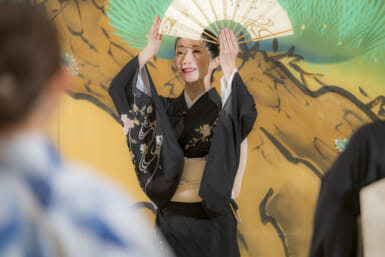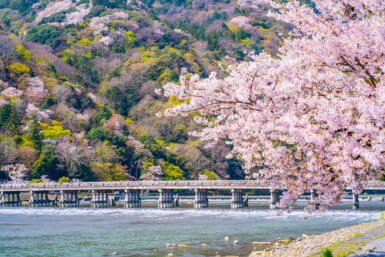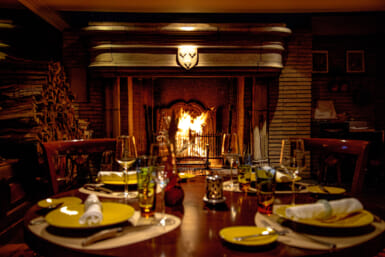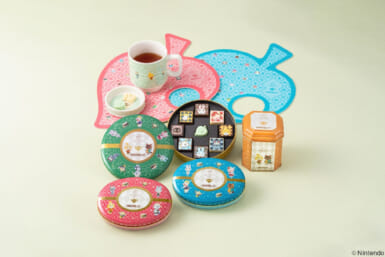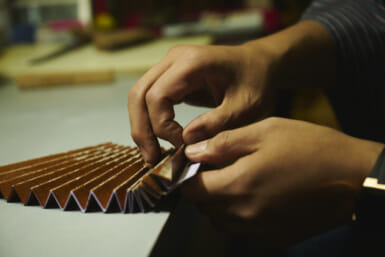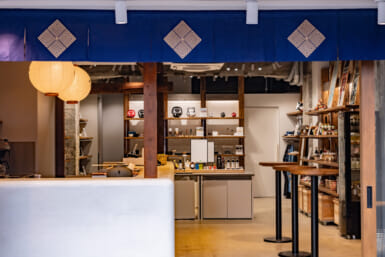Iwate Prefecture is best known for its trinity of noodles: wanko soba (buckwheat noodles in small bowls), Morioka jajamen (flat noodles with miso-meat sauce) and reimen (chilled noodles). But venture out to the coastal towns and you’ll see there’s more to Iwate cuisine than meets the eye.
Rikuzentakata, located in the southeast of Iwate, is where you should be heading for fresh fruit and seafood. Though compact, the city has a mix of new and established institutions that bring to the table only the very best of local ingredients. In Rikuzentakata, there’s enough food to pass around, and enough variety to soothe even the pickiest of eaters. Here’s what and where to eat when in town.

Ishikage-gai From Hirota Bay
Located near the Sanriku Coast in Rikuzentakata is Hirota Bay, one of the world’s three major fishing grounds. The bay boasts an abundance of seafood and catches from Hirota are highly coveted at Tokyo’s bustling Toyosu Fish Market. It’s said that the secret is the nutrients that flow from the mountains through the Kesen River and come from the Oyashio and Kuroshio currents. These three major sources create the best environment for high quality seafood.
Among the variety of fish and shellfish that the fishermen at Hirota Bay bring back to shore are ishikage-gai, or Bering Sea cockles. These cream-colored molluscs are renowned for their sweet and umami flavors. This kind of mollusc is a rarity, even within Hirota Bay, and is considered a luxurious delicacy and a true specialty of Rikuzentakata. You can find them around town at high-end washoku restaurants as well as sushi restaurants.

Muscat Cider From Kanda Vineyard
Kanda Vineyard has been growing grapes in Rikuzentakata since 1905. The soil, rich in minerals and nutrients, is the perfect base for a full harvest of delicious Muscat grapes. The vineyard was severely damaged by the 2011 Great East Japan Earthquake and Tsunami, but with the support of the local community and loyal customers, it was able to get back to business and, to this day, continues producing Rikuzentakata’s staple Muscat drinks.
At Kanda Vineyard, farmers and staff prepare the harvested grapes in a variety of ways, from sweet jellies and jams to cider and wines. Its inhouse cider, The Muscat Cider, has kept the same recipe – and the same label design too – since 1970. This cider pairs perfectly with the city’s seafood specialties, including ishikage-gai.
Yonesaki Apples
Rikuzentakata’s Yonesaki region is best known for its apple orchards that stretch along the shoreline. The orchards grow their trees on high ground, where they can soak in the sun and absorb the minerals from the sea breeze.
What makes the apples from Yonesaki special is their harvesting season. Rikuzentakata sees about 1,702 hours of sunlight every year, and because winter comes later in the year than in the rest of Iwate Prefecture, it can take longer than usual for apples to ripen. This extra time makes it so each fruit is sweeter and full of nectar.
The number of Yonesaki apples harvested each year is relatively limited, which makes this fruit rare and perhaps more expensive than you’d expect, but absolutely worth a taste.

Sushi at Sushi Matsuda
Sushi Matsuda is a relatively new restaurant which is conveniently located about five minutes from Rikuzentakata Station. In only its first few years of operating, Sushi Matsuda has already established itself as the go-to place to indulge in the freshest sushi.
The restaurant’s interior is traditional but cozy, which can often lead to happily satiated customers lingering after their meals. The menu features nothing short of the best catches from the Sanriku region. Seasonal fish are presented to each customer like jewels in a box, as you would present treasures uncovered from the seabed.
Take your pick from a platter of sashimi, sushi, kaisendon (seafood rice bowl), all using local ingredients. The menu changes with the seasons, so depending on when you visit, you can get an insight into one fraction of Rikuzentakata seafood.

Rikuzentakata’s location, with access to fresh and sea water as well as flatlands, allows for its unconventional lineup of local delicacies. Whether you go apple picking or oyster shucking, there’s plenty of options to choose from when it comes to satisfying your culinary cravings. One thing is true for everything you’ll find: It’ll be as fresh as can be.
Sponsored Post


